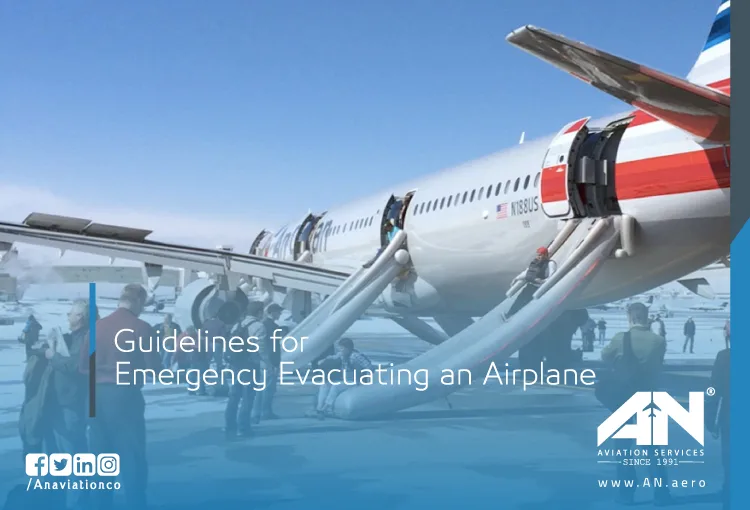
The prospect of an emergency evacuation during air travel can be unsettling, but preparation and knowledge can make all the difference. Whether due to an emergency situation, natural disaster, or technical malfunction, an organized evacuation ensures the safety of passengers and crew. Knowing the process, understanding the layout of the aircraft, and being aware of evacuation routes can save lives when every second counts.
This blog outlines essential guidelines for emergency evacuating an airplane, providing clear insights into preparation, best practices, and the steps involved in ensuring safety.
Understanding Emergency Situations in Air Travel
Airplanes are designed with rigorous safety standards, and emergency evacuations are rare. However, in situations where evacuation becomes necessary—such as a fire, mechanical issue, or crash landing—responding quickly and calmly is crucial.
Emergency evacuations often follow scenarios like:
- Mechanical emergencies, such as engine failure or system malfunctions.
- Natural disasters or severe weather during takeoff, landing, or in-flight.
- Cabin emergencies, including fire, smoke, or rapid cabin depressurization.
Every evacuation is governed by pre-determined protocols to minimize chaos and ensure all passengers are safely removed from the aircraft.
Evacuation Planning and Pre-Flight Awareness
Effective evacuation planning starts long before an emergency arises. Passengers and crew are encouraged to familiarize themselves with safety procedures from the moment they board an aircraft. Here’s how to prepare:
Listen to the Safety Briefing:
Flight attendants provide critical information during the pre-flight safety briefing. Pay attention to instructions about the location of emergency exits, the use of oxygen masks, and life vests.
Locate Your Exit Routes:
Identify the nearest exit route to your seat. Airplanes are equipped with multiple exits to facilitate quick evacuations. Remember the number of rows between your seat and the exit, as visibility may be limited in an emergency.
Understand the Area of Refuge:
In an emergency evacuation, the area of refuge refers to a safe spot outside the aircraft where passengers regroup. Follow the crew’s instructions to reach this area once you have exited the plane.
Steps to Take During an Emergency Evacuation
During an evacuation, every action matters. Follow these steps to ensure a safe and efficient evacuation:
1. Follow Crew Instructions:
Flight attendants are trained to handle emergencies and guide passengers through the process. Their instructions are critical in maintaining order and preventing panic.
2. Leave Belongings Behind:
It might be tempting to grab your cell phone, bag, or other belongings, but doing so can slow down the evacuation process. Prioritize your safety and leave everything behind.
3. Use the Assigned Exit Route:
Depending on the location of the emergency or damage to the aircraft, some exits may be unusable. Follow the crew’s directions to the nearest functional exit.
4. Use Emergency Slides Properly:
If evacuation slides are deployed, remove sharp objects like high heels to avoid puncturing the slide. Sit down, cross your arms, and slide feet-first for a safe descent.
5. Assist Others if Possible:
If you’re in a position to help others, such as assisting passengers with reduced mobility or guiding children, do so without putting yourself in danger.
Key Safety Features for Emergency Evacuation
Airplanes are equipped with several safety features to facilitate efficient evacuations. These include:
- Exit Doors and Slides: Clearly marked exits with inflatable slides for rapid evacuation.
- Lighting Systems: Illuminated pathways guide passengers to exits even in low visibility.
- Evacuation Routes: Aircraft cabins have designated evacuation paths to avoid congestion.
- Cell Phones and Communication Tools: Post-evacuation, passengers can use communication tools to stay in touch with emergency services or family.
Emergency Situations: Handling Panic and Staying Focused
A calm and composed mindset is critical in an evacuation. Panic can slow down the process and jeopardize safety. Here are tips to manage anxiety during such situations:
- Take Deep Breaths: Focus on staying calm and following instructions.
- Listen Attentively: Avoid distractions and pay attention to the crew.
- Move Quickly but Safely: Avoid pushing or rushing to prevent injuries.
Crew members are trained in emergency response to handle high-pressure situations effectively. Trust their expertise and remain cooperative throughout the evacuation process.
Post-Evacuation Safety
Once you have exited the aircraft and reached the area of refuge, additional steps are necessary to ensure everyone’s safety. Emergency response teams will take over, providing medical assistance and organizing transportation to safety.
Passengers should:
- Remain in the designated safe area until instructed to move.
- Avoid returning to the aircraft for any reason.
- Report any missing individuals or injuries to the crew or rescue teams.
The Role of Training and Technology in Evacuation Planning
Advances in training and technology have greatly improved evacuation processes. Airlines and regulatory bodies conduct regular evacuation drills and use simulations to prepare crews for various emergency scenarios. Modern planes are also equipped with enhanced safety systems, including improved emergency exit designs and real-time communication tools.
Conclusion
An emergency evacuation is a situation no passenger wants to face, but being prepared can make all the difference. From identifying evacuation routes to following the crew’s guidance, every small action contributes to a safe outcome. The aviation industry invests heavily in evacuation planning and technology to ensure that passengers and crew are well-equipped to handle unexpected situations.
The key takeaway? Preparation, awareness, and a calm approach can turn a potentially life-threatening scenario into a well-executed safety operation.

